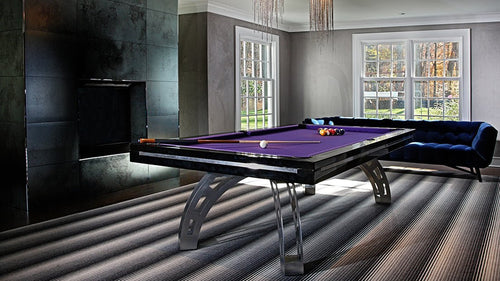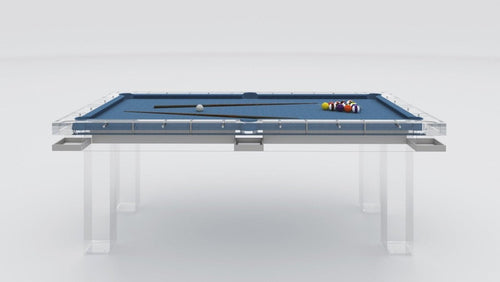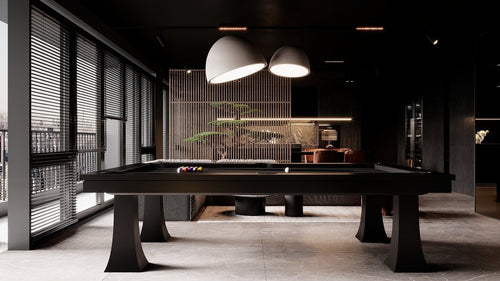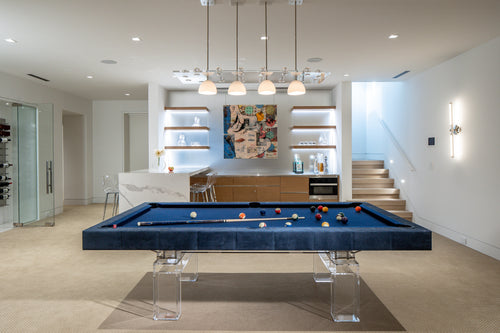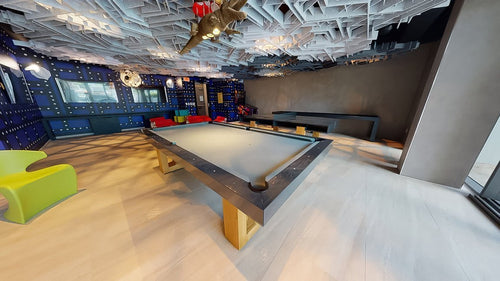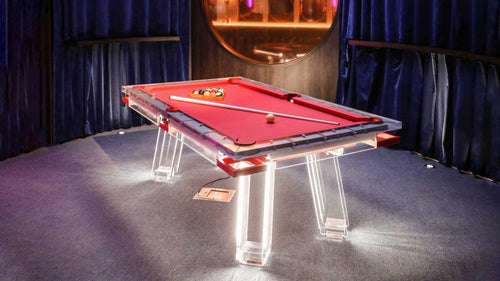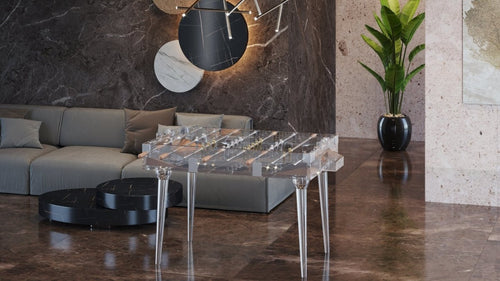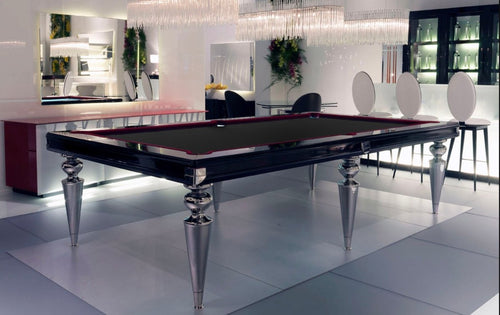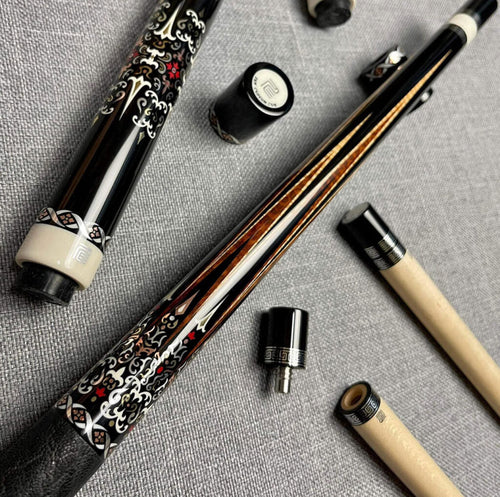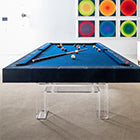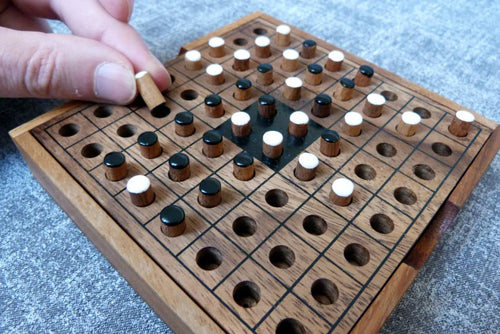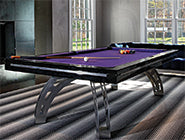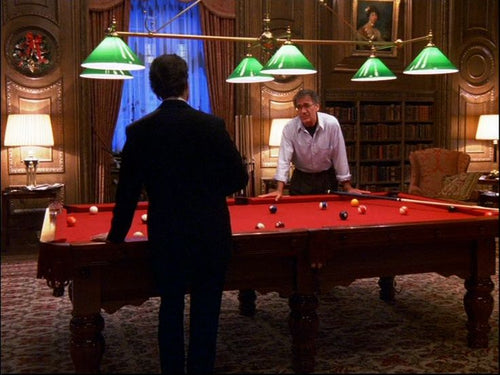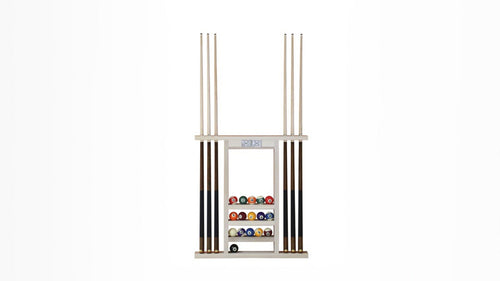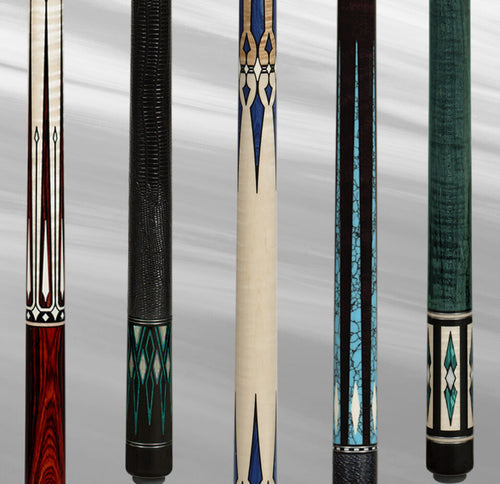Enjoy our modern designs
Estimated Read Time: 6 mins |
Quick take: Clear acrylic keeps sight-lines open and bright, while warm woods ground the space with texture and richness. Used together—smartly lit and balanced—they deliver a room that feels both cutting-edge and inviting.
The Centerpiece: Dubai-Inspired Acrylic & Walnut Pool Table
This table is inspired by the Burj Al Arab in Dubai—an icon of forward-leaning design. Key specs:
- Top rails: Solid natural walnut (custom stains available).
- Base: Full clear acrylic arcs that mimic sail-like curves.
- Customization: Swap legs for solid wood, adjust rail species, or add inlay accents.
- Function bonus: Optional two-sided top converts the table to dining or ping-pong mode.
Placed on a traditional Persian-style rug, the table shows exactly how acrylic can float above warm, patterned surfaces without visual overload.
Why Acrylic + Wood Works
Contrast That Pops
Acrylic is slick, shiny, and airy; wood is grainy, matte-to-satiny, and tactile. When adjacent, each material amplifies the other’s strengths—clarity against character.
Built-In Balance
Transparent legs lighten the perceived mass of a bulky wood top. The result: a substantial piece that never feels heavy or clunky.
Light Play
Acrylic surfaces reflect and transmit light, turning under-table LEDs or daylight from a nearby window into shimmering highlights. Wood absorbs and diffuses, preventing glare and adding depth.
Design Principles to Nail the Mix

Contrast & Variety
- Use acrylic for legs, chair backs, or accessory pieces where transparency matters.
- Reserve richly stained or reclaimed woods for planes that benefit from warmth—floors, tabletops, shelving.
Harmony & Unity
- Repeat shapes—if the table legs arc, echo that curve in a pendant light or chair silhouette.
- Maintain a cohesive tonal palette (e.g., walnut + smoked acrylic vs. maple + crystal-clear acrylic).
Balance & Emphasis
- Anchor clear pieces with one or two solid wood elements so the room doesn’t feel “floaty.”
- Let the largest acrylic object (this pool table) command center stage; keep surrounding pieces quieter in scale.
Light Interaction
- Add dimmable down-lights to control glare off acrylic.
- Side-wash wood panels to accentuate grain depth.
Functional Tweaks
- Acoustics: Hard acrylic bounces sound. Layer in rugs, upholstered stools, or acoustic wall panels.
- Maintenance: Use microfiber and non-abrasive cleaner on acrylic; oil or wax wood surfaces seasonally.
Room-Scale Tips
Small spaces: Transparent acrylic legs visually erase bulk—perfect for tight condos.
Large spaces: Combine broad-plank wood flooring with a few bold acrylic accent pieces to break up volume.
Open-plan kitchens: Echo the pool table’s clear legs with acrylic bar-stool seats for a cohesive line of sight to the dining area.
FAQs
Does acrylic scratch easily?
Moderate hardness—treat like high-end wood: use coasters, felt pads, and gentle cleaners.
Can the table’s legs be solid wood instead?
Yes—swap acrylic for walnut, oak, or a painted finish. We offer full leg customization.
Ready to Elevate Your Space?
Email our design team for custom options, finish samples, or a virtual room mock-up featuring this Burj-inspired centerpiece.


